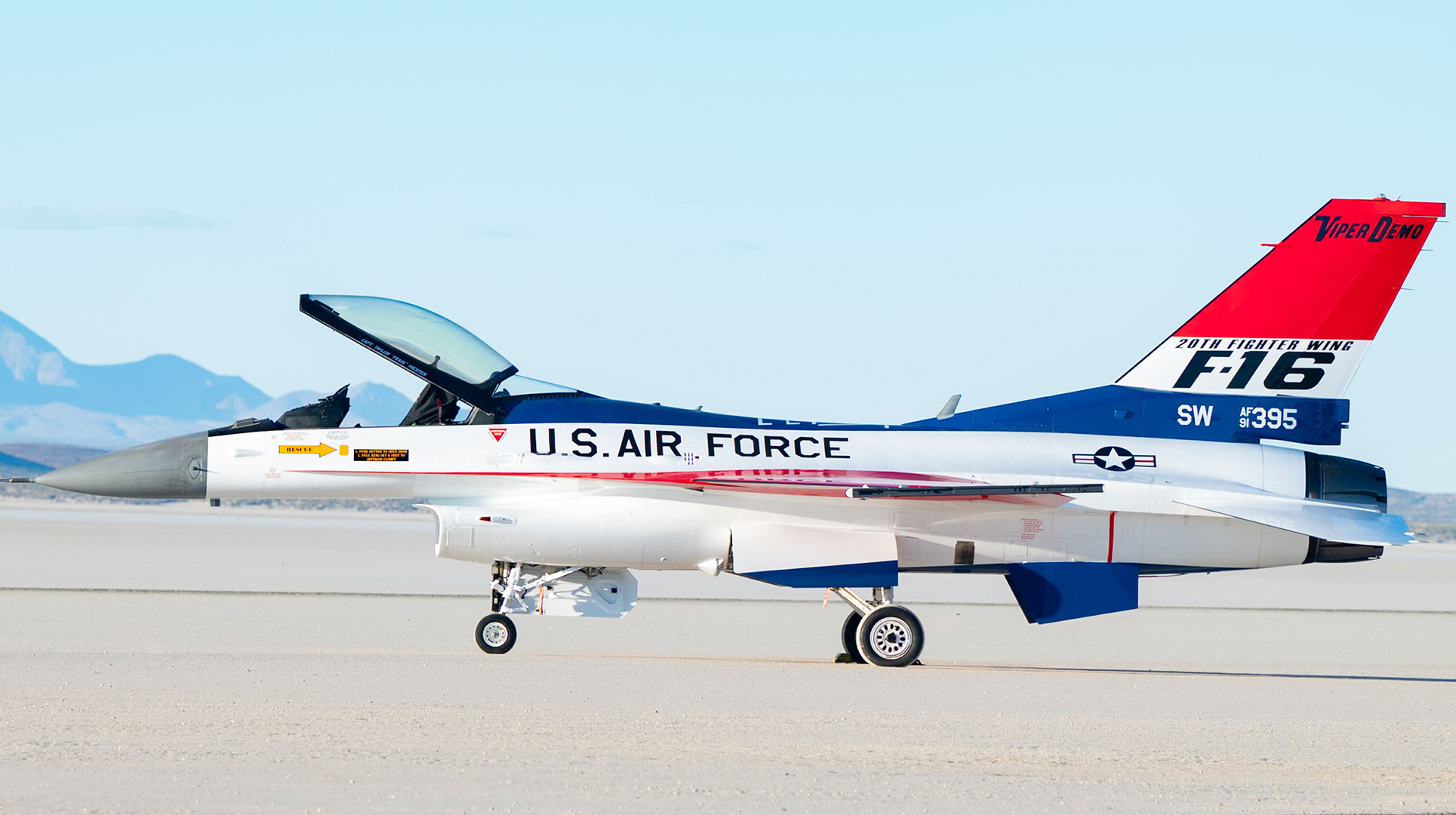

The Air Force debuted an old-is-new paint job for an F-16 this week to commemorate the aircraft’s 50th anniversary. The red-white-and-blue livery mirrors the scheme used on original YF-16 demonstrators in the early 1970s, and will also seem familiar to anyone who grew up building model planes from the era.
The YF-16’s first flight was in February 1974 and the first operational jets arrived at Hill Air Force Base in 1979.
The original YF-16 — which kept the ‘Y’ designator as an experimental plane until full production began — debuted during a two-year gold rush of aviation advancement as the modern replacements for the Air Force and Navy’s fleet of 1950s-designed fighters all arrived within months of each other in the early 1970s.
The F-14 took its first flight in December 1970. The F-15 and A-10 both followed in 1972 and the F-16 in 1974. The F-18 was not far behind, in 1978, just a year after the Space Shuttle’s first glide test in 1977. For comparison, the next four major fighters — the F-117, F-22, F/A-18 and F-35 — took 15 years to arrive between 1991 and 2006.

The throwback paint job is on an F-16 flown by the F-16 Viper Demonstration Team, which brings up a second issue in F-16 lore: just what do you call this jet?
Officially, it’s the Fighting Falcon, a name submitted by an Air Force Technical Sgt. in a “name the plane” contest in 1976. According to an official letter posted on F-16.net, TSgt. Joseph A. Kurdell earned a free dinner at the MacDill NCO Mess for submitting the name, which he said he’d picked up as a fan of attending Air Force Academy football games, whose mascot was the Fighting Falcon.
The name also thematically made the F-16 one of two new ‘birds of prey,’ alongside the Air Force’s other new jet of the era, the F-15 Eagle.
But pilots of the first F-16s at Hill Air Force Base called it the ‘viper,’ a name that has stuck as the plane’s unofficial nickname over the decades. An early F-16 pilot at Hill, Lt. Col. Pat “Gums” McAdoo, said in an interview posted on F-16.net that ‘viper’ was the early choice of pilots for the first production F-16s.
“At the end of the runway, the F-16 did resemble a cobra or something as it approached you,” McAdoo said. “We all voted, and Viper came in really high. Seems there was a series on TV that had ‘colonial Vipers’ flying off of Battlestar Galactica.
“In any case, the Generals didn’t want a plane ‘named after some snake’!” McAdoo said.

The Battlestar Galactica-Viper mythology has circulated widely but McAdoo’s memories indicate the TV show was either coincidental or a secondary source of the name. Still, the late-70s Battlestar TV-Viper was notably F-16-like, with a single pilot, single tail, prominent air intakes for some reason and a healthy taste for weekly dogfights.
The timing on the Battlestar/Viper connection is about right, too. The show’s 34 episodes were broadcast from November 1978 to May 1980, just as the pilots at Hill were kicking the tires and lighting the fires on their own new Vipers.
The latest on Task & Purpose
- Marines want to wear their uniform for high school graduation, but their school said no
- AC-130 gunship crewman killed in shooting with Florida sheriff deputy
- The Space Cowboys: Guardians earn their spurs in cavalry tradition
- Soldier detained in Russia may have been set up by girlfriend, mother says
- Army debuts new recruiting ads aimed at high-tech civilians rather than soldiers
